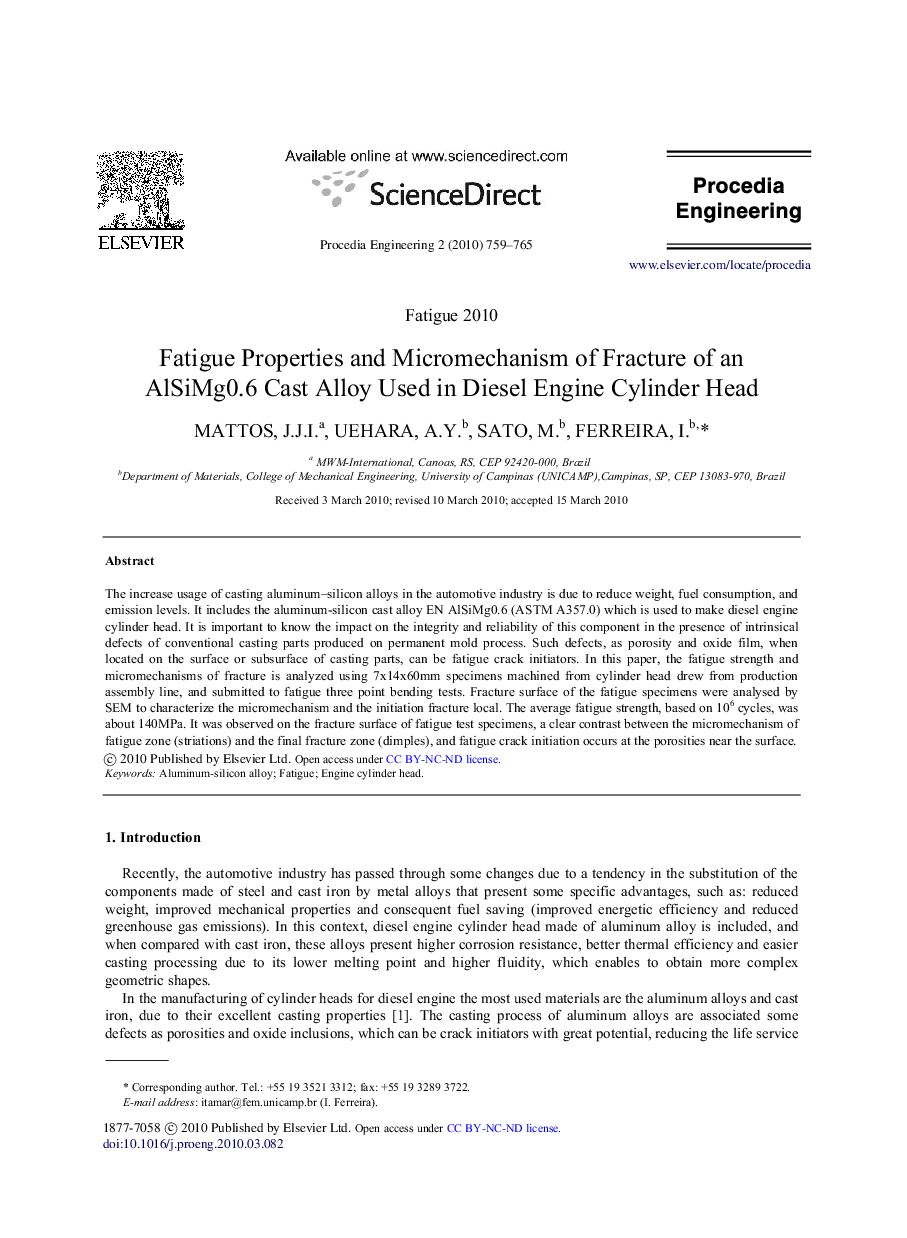| Article ID | Journal | Published Year | Pages | File Type |
|---|---|---|---|---|
| 864669 | Procedia Engineering | 2010 | 7 Pages |
The increase usage of casting aluminum–silicon alloys in the automotive industry is due to reduce weight, fuel consumption, and emission levels. It includes the aluminum-silicon cast alloy EN AlSiMg0.6 (ASTM A357.0) which is used to make diesel engine cylinder head. It is important to know the impact on the integrity and reliability of this component in the presence of intrinsical defects of conventional casting parts produced on permanent mold process. Such defects, as porosity and oxide film, when located on the surface or subsurface of casting parts, can be fatigue crack initiators. In this paper, the fatigue strength and micromechanisms of fracture is analyzed using 7×14×60 mm specimens machined from cylinder head drew from production assembly line, and submitted to fatigue three point bending tests. Fracture surface of the fatigue specimens were analysed by SEM to characterize the micromechanism and the initiation fracture local. The average fatigue strength, based on 106 cycles, was about 140MPa. It was observed on the fracture surface of fatigue test specimens, a clear contrast between the micromechanism of fatigue zone (striations) and the final fracture zone (dimples), and fatigue crack initiation occurs at the porosities near the surface.
